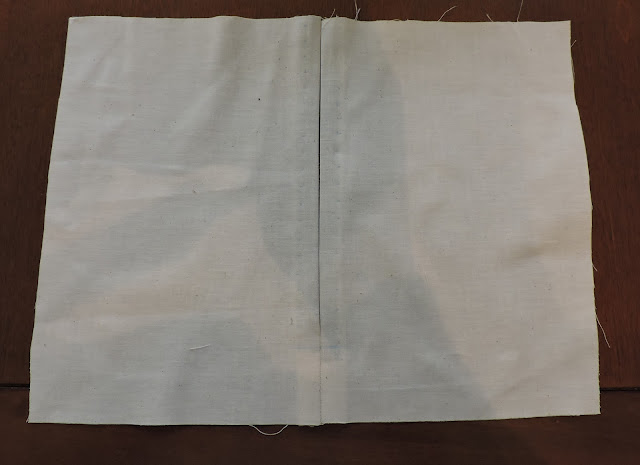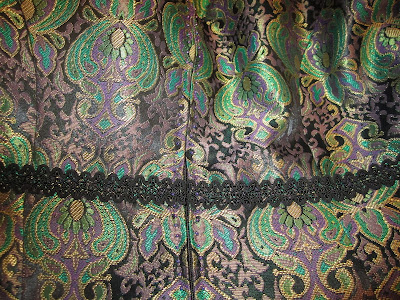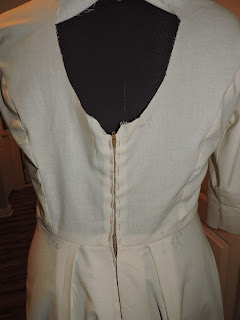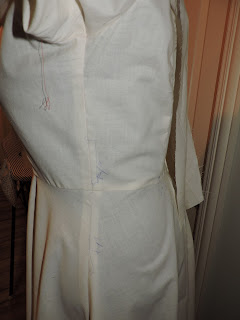Yikes!
It's almost Spring. So why did I decide to make this cape? Because this sweet grape acrylic faux fur (#306542) is beautiful.
Spring is not yet sprung in the mid-west. Days are sunny about 55 degrees, while night time temperatures drop to the mid or upper 40's. I'll get at least a few wears before warmer days truly come my way. Then when fall returns, I'm ready for it. ;-)
Just as the season is changing the availability of some heavier fabrics are no longer available at Mood's online store. Maybe this lovely textured textile will return for the fall season. I used Vogue 8212 to make my new cape. It's out of print, but I've seen many RTW capes in stores.
The pattern is described as Misses' wrap, cape, and shrug: A: gathered front wrap, self-lined, self loops and covered buttons, elastic at the upper and lower edges. B: front flounce and snap closing. C: flounce and contrast ties. D: side front wrap cape has flounce with double fold bias tape, self fabric leaves and flower. I made view B, size medium.
Although it was the basic over the head shape, there are some interesting design elements. The side looks like a sleeve and the diagonal seaming across the front with flounce is eye catching. It's calls for moderate stretch fabric. The faux fur has a knit backing, but hardly any stretch in it. No fuss, no muslin.
This was a quick and easy cape to sew. It's not as opaque as it appears when holding it to the light. For protection from the cold winds, I lined it. Adding a lining super simple to do. I cut the same pattern pieces except the flounce for the lining, sewing it together the same as the cape. Then attaching it to the cape using the bag method. I like this cape and the fabric too.
Now it's time to lighten up the wardrobe a bit. ;-)
Happy Sewing!
Cennetta
































